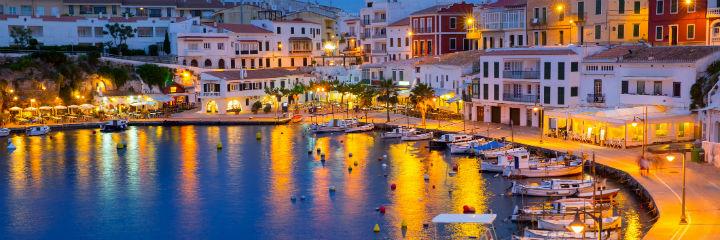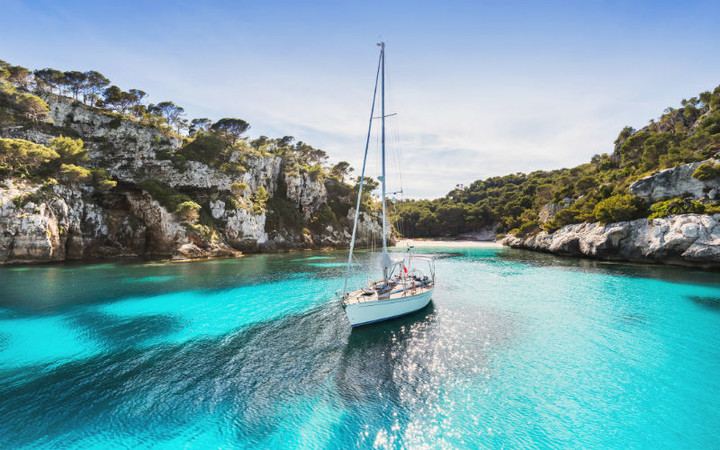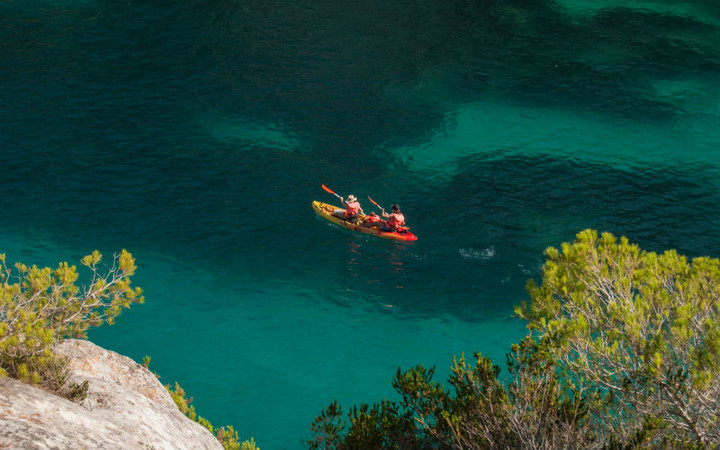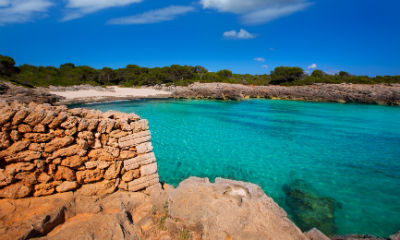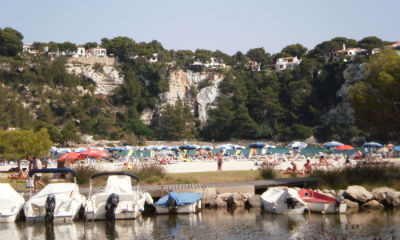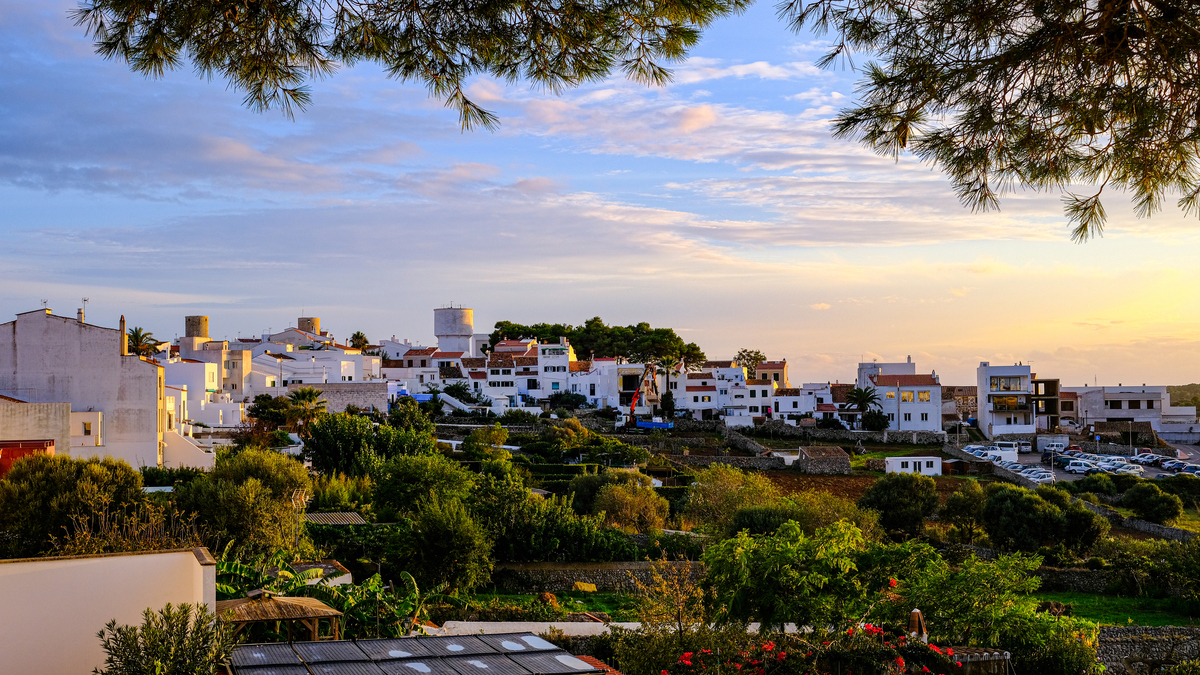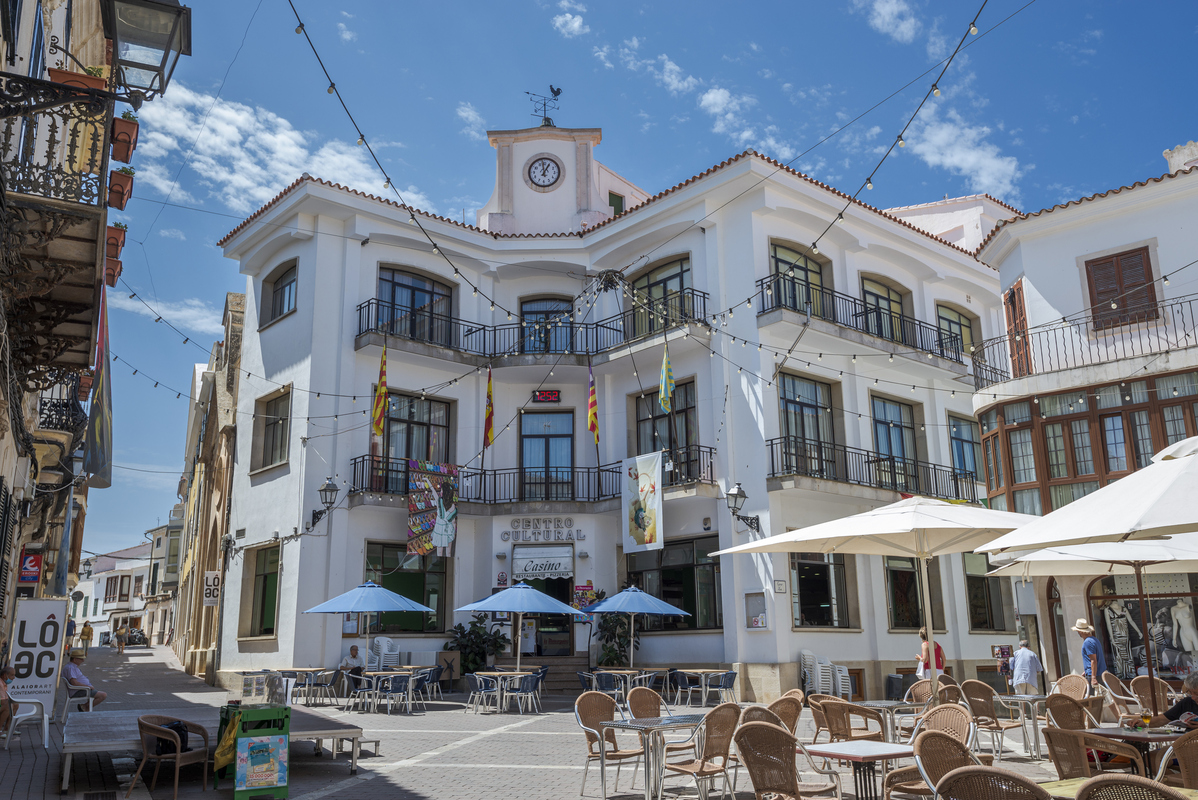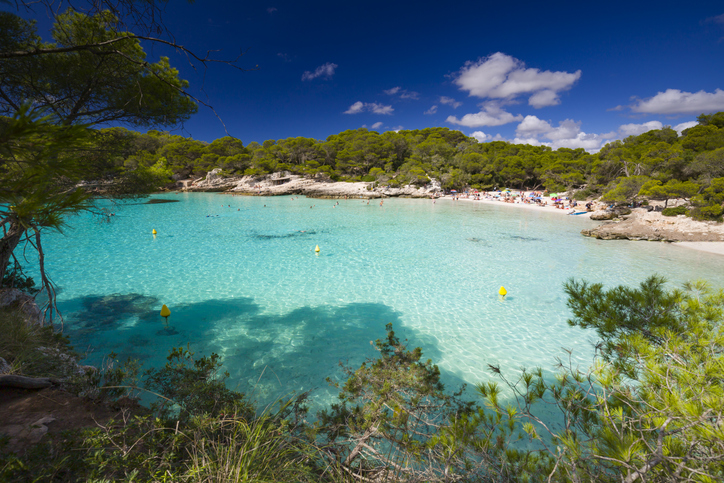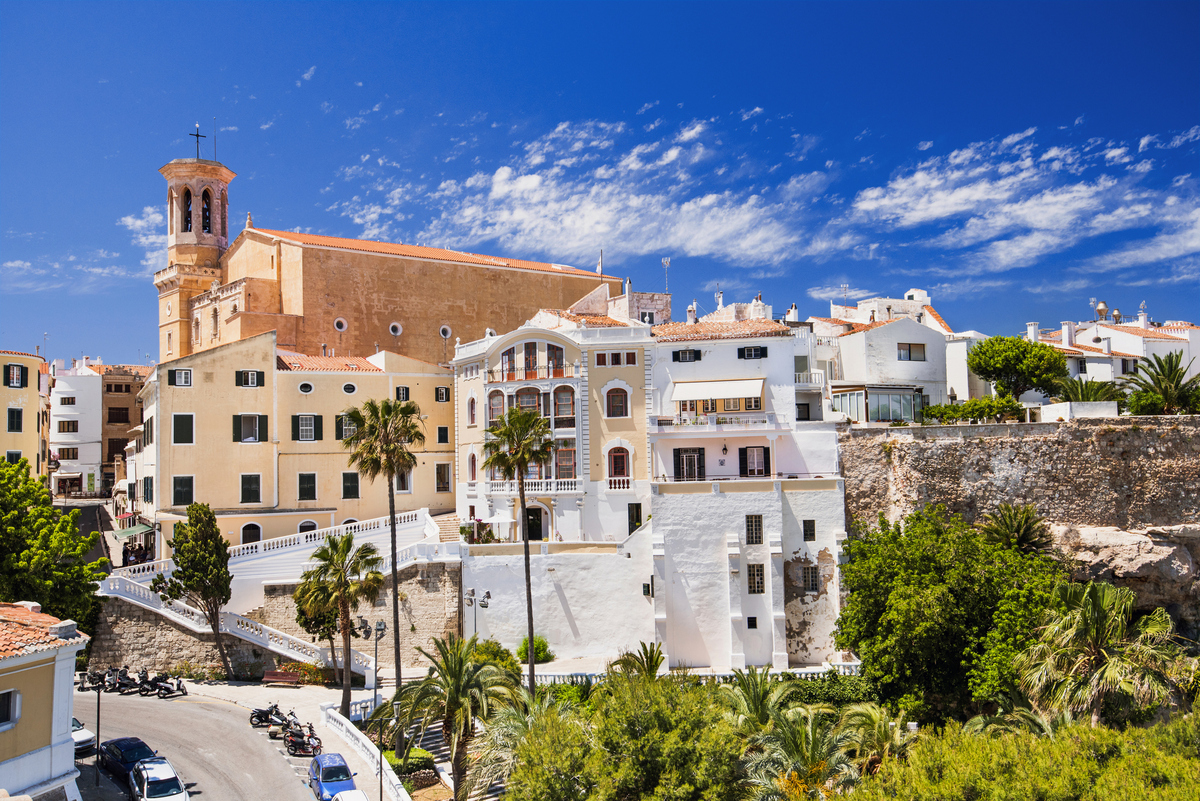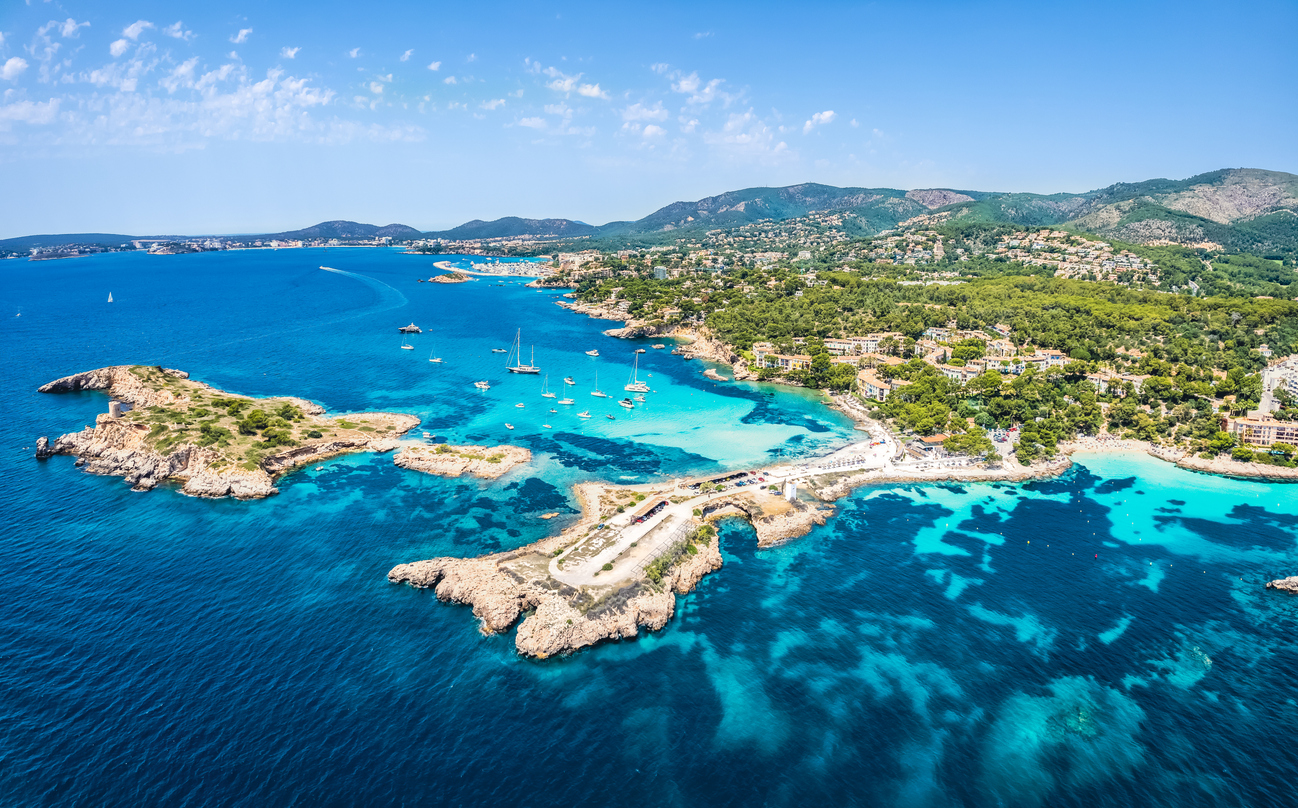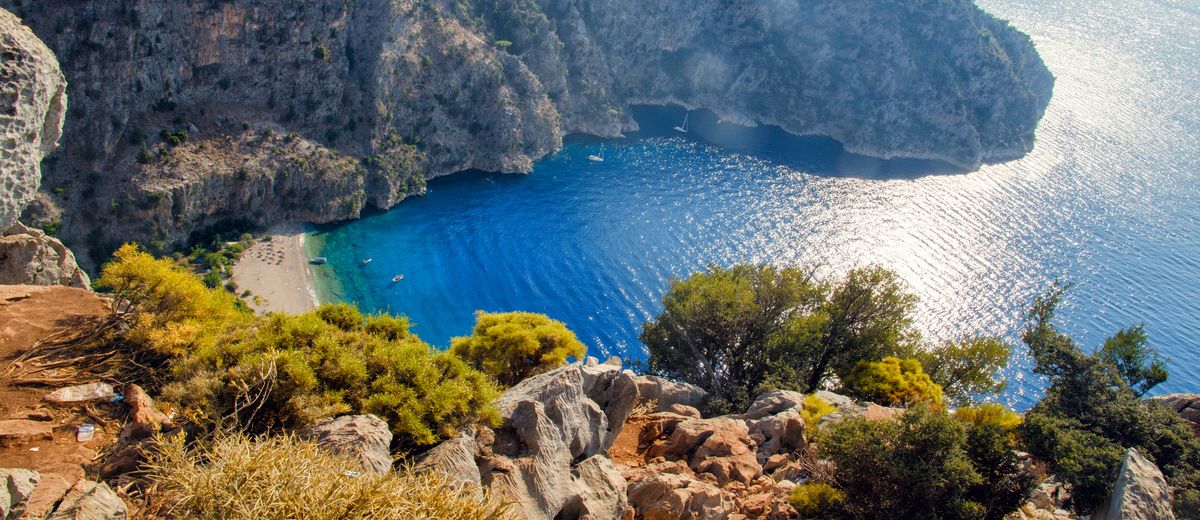It’s all about embracing the slow life on Menorca villa holidays. Days are spent hiking through olive and orange groves down to secret coves, shopping for traditional leather sandals in artisan stores, and feasting on day-fresh seafood at harbourfront restaurants. A new generation of creatives are shaking up the scene, from reimagining centuries-old sandstone quarries as arts and cultural centres, to transforming Menorca villas into boutique boltholes.
And if you want adventure, there’s plenty of it. Menorca may only be 30 miles long, but it’s home to the Med’s largest protected marine reserve. The sea teems with marine life, thanks to local conservation initiatives such as the Underwater Atlas project preventing boat anchors disturbing the seagrass beds. Snorkelling and diving are the best way to explore this watery playground, while back on dry land, you can hike, bike or horse ride the historic Camí de Cavalls.
Here you have some inspiration on things to do in Menorca:
Diving in Menorca
Menorca is one of the most underrated diving destinations in Spain, with rich marine life, excellent visibility and diverse seascapes including reefs and caves. For an added adrenaline rush, ditch the gear and freedive some of the finest underwater sites, such as the Swiss Cheese cave, with its tangle of tunnels and brilliant blue light; Millennium Falcon, dubbed Menorca’s only cenote; and the Biblioteca, an extraordinary cave adorned with gold-tinted stalactites.
Discover the landscape
Explore the scenic landscapes of Menorca, from the unspoiled coast to the hilly rural interior. Hike picturesque walking trails to the summit of El Toro, Menorca’s highest mountain, for epic views, or horse ride parts of Camí de Cavalls, an ancient bridleway tracing wave-lashed cliffs, hidden beaches, ancient monoliths and lighthouses.
Snorkelling in Menorca
Menorca is home to the largest protected marine environment in the Mediterranean. Make the most of the teeming waters by snorkelling; head to the coves to the east of Binimel-là beach where you might see octopus and even a Moray eel.
Visit the Museu de Menorca
Step back in time at Museu de Menorca, housed in the cloister adjoining the church, to see a series of displays exploring the island’s early cultures, from Talayotic and Roman to Byzantine and Islamic.
Birdwatching in Menorca
Go birdwatching around the wild lagoon of S’Albufera, home to over 100 species of water bird. A network of paths showcases the natural beauty and rich wildlife of the region, with maps available from the visitor centre.A scattering of archaeological sites across Menorca nods to the Talayotic era (1500BC–123BC), during which sophisticated cultures built dozens of cone-shaped structures. One of the best is Cornia Nou near Mahón, with a staircase you can climb to reach the top.
Visit archaeological sites in Menorca
A scattering of archaeological sites across Menorca nods to the Talayotic era (1500BC–123BC), during which sophisticated cultures built dozens of cone-shaped structures. One of the best is Cornia Nou near Mahón, with a staircase you can climb to reach the top.


